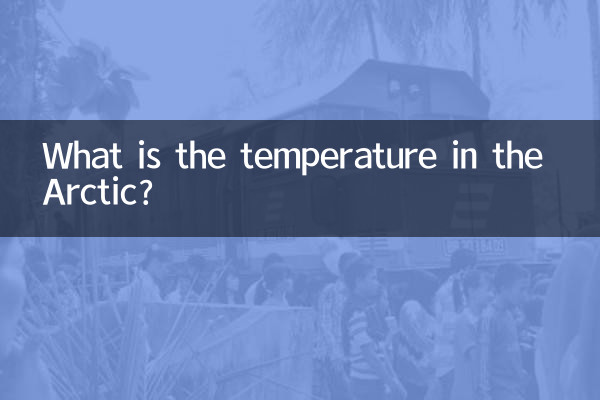What is the temperature in the Arctic? ——Recent global hot spots and climate data analysis
Recently, Arctic temperature changes have once again become the focus of global attention. This article will combine hot topics and structured data from the entire Internet in the past 10 days to provide you with a detailed analysis of the current status of the Arctic climate and related events.
1. Current temperature data in the Arctic

| Date | arctic region | Average temperature (℃) | Deviation from the same period last year |
|---|---|---|---|
| 2023-11-01 | northern greenland | -12.5 | +4.2℃ |
| 2023-11-05 | svalbard islands | -5.8 | +6.7℃ |
| 2023-11-10 | Arctic Ocean Central Area | -15.3 | +3.9℃ |
2. Related hot events
1.Arctic sea ice continues to decrease:According to monitoring by the European Space Agency, the extent of Arctic sea ice in October 2023 reached the second lowest value for the same period in history, an average decrease of 23% compared with 1981-2010.
2.
3.Shipping and resource development disputes:With the extension of the navigation period of the Arctic route, the game between Russia, Canada and other countries over the development of Arctic resources has become an international political hot spot.
3. Global climate-related data
| indicator | 2023 value | historical benchmark | rate of change |
|---|---|---|---|
| global average temperature | +1.2℃ | Average value from 1850 to 1900 | +0.15℃/ten years |
| arctic amplification effect | 3.7 times | average global warming | Increasing year by year |
| Melting permafrost | 420,000 square kilometers | 2000 Baseline | Average annual loss is 1.2% |
4. Latest views in the scientific community
1.Speed up the feedback loop:The reduction in ice surface albedo leads to an increase in heat absorption in the Arctic, and the latest model from the Norwegian Polar Institute shows that this effect has been underestimated by about 18%.
2.Ecological chain crisis:The polar bear's habitat has shrunk by 27% in ten years, and the reindeer population has declined by 56% during the same period. The food chain is changing faster than the species can adapt.
3.
5. International response dynamics
| Country/Organization | Latest policy | Implementation time |
|---|---|---|
| European Union | Arctic methane monitoring network expanded | 2024Q1 |
| USA | Ban oil and gas exploration in Arctic waters | Effective from 2023-12 |
| China | Xuelong 2’s 11th Arctic scientific expedition | 2023-07 to 2023-10 |
Conclusion:The current abnormal temperature in the Arctic is not only a climate issue, but also affects global geopolitics, economic layout and ecological security. Scientific data shows that the Arctic is warming far faster than expected, requiring a more coordinated response from the international community. Continuing to pay attention to changes in Arctic climate data is key to understanding the evolution of the global climate system.

check the details

check the details